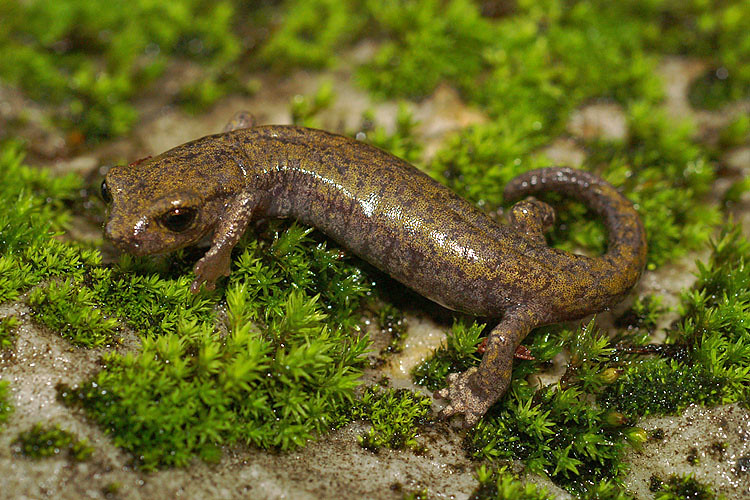OopsUTF-8 U+6211 U+662F wrote:wheyprotein wrote:There hasn't been a question in a long time so I'll ask!
1. Family?
2. Where does it eat? Give two examples of what it would eat.
3. T/F The females are polyandrous. Define polyandrous.
4. Conservation?Okay, I got the answer without cheating, but the genus is in the URL so be careful
1) Emydidae
2) Can forage on land and catch prey in water; frogs and crayfish
3) F; One female gets exclusive mating rights to many males
4) Endangered
Herpetology B/C
-
wheyprotein
- Member

- Posts: 7
- Joined: Tue Apr 04, 2017 12:40 pm
- Division: C
- State: IA
- Has thanked: 0
- Been thanked: 0
Re: Herpetology B/C
AMES HS '21
2018-19 Events:
Dynamic Planet
Experimental Design
Geologic Mapping
2018-19 Events:
Dynamic Planet
Experimental Design
Geologic Mapping
-
UTF-8 U+6211 U+662F
- Exalted Member

- Posts: 1597
- Joined: Sun Jan 18, 2015 7:42 am
- Division: C
- State: PA
- Has thanked: 6 times
- Been thanked: 15 times
Re: Herpetology B/C
Describe the difference between viviparity, ovoviviparity, ovuliparity, and true oviparity. Give an example for each (use a reptile/amphibian if possible).
-
Froggie
- Exalted Member

- Posts: 303
- Joined: Mon Jun 19, 2017 2:12 pm
- Division: C
- State: CA
- Has thanked: 10 times
- Been thanked: 15 times
Re: Herpetology B/C
Viviparity: Live young, not eggs. Ovoviviparity: Form eggs, and the eggs stay inside the mother until ready to hatch. Can hatch either inside the body or eggs sacs are expelled from the mother’s body. Ovuliparity: (not really sure) fertilization is external. True oviparity: (not really sure either) fertilization is internal.UTF-8 U+6211 U+662F wrote:Describe the difference between viviparity, ovoviviparity, ovuliparity, and true oviparity. Give an example for each (use a reptile/amphibian if possible).
Viviparous: Storeria
Ovoviviparous: Nerodia
Ovuliparity: Scaohiopus
True oviparous: Elapidae
"A lot of people have quotes in their signature. Maybe I should have a quote in my signature. "
- Froggie
- Froggie
-
UTF-8 U+6211 U+662F
- Exalted Member

- Posts: 1597
- Joined: Sun Jan 18, 2015 7:42 am
- Division: C
- State: PA
- Has thanked: 6 times
- Been thanked: 15 times
Re: Herpetology B/C
Yep, except not sure about Nerodia and ElapidaeFroggie wrote:Viviparity: Live young, not eggs. Ovoviviparity: Form eggs, and the eggs stay inside the mother until ready to hatch. Can hatch either inside the body or eggs sacs are expelled from the mother’s body. Ovuliparity: (not really sure) fertilization is external. True oviparity: (not really sure either) fertilization is internal.UTF-8 U+6211 U+662F wrote:Describe the difference between viviparity, ovoviviparity, ovuliparity, and true oviparity. Give an example for each (use a reptile/amphibian if possible).
Viviparous: Storeria
Ovoviviparous: Nerodia
Ovuliparity: Scaohiopus
True oviparous: Elapidae
Your turn!
-
Almandine
- Member

- Posts: 98
- Joined: Sun Jan 01, 2017 10:40 am
- Division: C
- State: MN
- Has thanked: 0
- Been thanked: 0
Re: Herpetology B/C
¯\_(ツ)_/¯
What part of this genus's body can project up to 80% of its length?
List genus and body part.

What part of this genus's body can project up to 80% of its length?
List genus and body part.

Herpetology ONLY HERPETOLOGY
Re: Herpetology B/C
ooh fun I like this oneAlmandine wrote:¯\_(ツ)_/¯
What part of this genus's body can project up to 80% of its length?
List genus and body part.
hydromantes, and its long, sticky tongue
-
axolotl
- Member

- Posts: 23
- Joined: Mon Apr 30, 2018 8:09 am
- Division: Grad
- State: PA
- Pronouns: She/Her/Hers
- Has thanked: 17 times
- Been thanked: 25 times
Re: Herpetology B/C

What percent of this organism's habitat is now destroyed?
How do juveniles differ from adults?
What time of year is this organism most commonly seen?
Do females or males live longer?
What is the most optimal water temperature for this organism?
T/F: Females mate every single mating season.
MHS ‘20, Pitt '24
axolotl's User page
axolotl's User page
-
UTF-8 U+6211 U+662F
- Exalted Member

- Posts: 1597
- Joined: Sun Jan 18, 2015 7:42 am
- Division: C
- State: PA
- Has thanked: 6 times
- Been thanked: 15 times
Re: Herpetology B/C
axolotl wrote:
Not sure if I entered the image correctly
What percent of this organism's habitat is now destroyed?
How do juveniles differ from adults?
What time of year is this organism most commonly seen?
Do females or males live longer?
What is the most optimal water temperature for this organism?
T/F: Females mate every single mating season.
I'm thinking this is a musk turtle? 70%, juveniles are smaller, summer, females, 20-30 degrees Celsius, T
-
axolotl
- Member

- Posts: 23
- Joined: Mon Apr 30, 2018 8:09 am
- Division: Grad
- State: PA
- Pronouns: She/Her/Hers
- Has thanked: 17 times
- Been thanked: 25 times
Re: Herpetology B/C
Nope, try again on the identification. (sorry this is a bad angle lol)UTF-8 U+6211 U+662F wrote:axolotl wrote:
Not sure if I entered the image correctly
What percent of this organism's habitat is now destroyed?
How do juveniles differ from adults?
What time of year is this organism most commonly seen?
Do females or males live longer?
What is the most optimal water temperature for this organism?
T/F: Females mate every single mating season.I'm thinking this is a musk turtle? 70%, juveniles are smaller, summer, females, 20-30 degrees Celsius, T
MHS ‘20, Pitt '24
axolotl's User page
axolotl's User page


